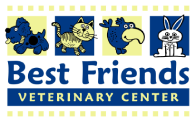Weight Control and Exercise for Cats
Over half the cats we see every year are overweight, many extremely so. Being overweight has some serious consequences for cats, just as it does people. In fact, the average life-span of an obese pet is years shorter than that of pets who stay slim and trim. Weight related diseases include arthritis, heart disease, diabetes, liver disease, bladder problems and many types of cancer.
Most of our house pets are not very active. Not only are many of them overweight but they also don’t get enough exercise. This is bad for their health and contributes to behavior problems – a cat that is bored and inactive is more likely to be destructive or aggressive.
So what should you do to prevent these problems?
Some cats are better at burning calories than others but for most cats the recommended feeding amounts on cat food bags are way too generous. If you are feeding a good quality food your cat can eat much less than the label says and still get all the nutrients necessary for good health. Feed only what your pet needs to maintain a healthy weight.
You should be able to easily feel your cat’s ribs and backbone under his skin. If there is lots of padding over the ribs your cat is probably overweight. You should be able to see his waist – his body should curve up behind his ribs if you are looking at him from the side. Looking down from above you should also see a pronounced narrowing of the body behind the ribs. Also look for bulges over the hips or a pot belly, common places for excess pounds to show up. (Many cats have a ouch of fat and skin between the back legs, even if they are not overweight. This is not the same as an enlarged “pot belly”.)
On the other hand, if your pet’s ribs or backbone are visible, or very pronounced when you run your hand across them, your pet may be too thin.
Choose a good quality pet food which fits your pet’s lifestyle. If your pet is a couch potato, he needs a low calorie food like Science Diet Feline Maintenance Light.
Limit treats, snacks and tablet food. It doesn’t take many extras to tip the scales. Avoid processed treats like Pounce that are loaded with fat and salt. If you must feed treats, give bits of the pet’s regular food. Canned is OK in small amounts, but the more moist food you feed, the faster plaque and tartar will build up on teeth.
Make sure your cat gets the exercise he needs. If he tends to be lazy, get him up and moving with a game of chase the string or roll the wad of paper. How often does your cat really cut loose and RUN? Probably not often enough.
If your cat is already overweight he’ll need an exercise program and/or a restricted calorie diet. Most “lite” foods available in supermarkets are only about 10-15% less in calories than regular food.
